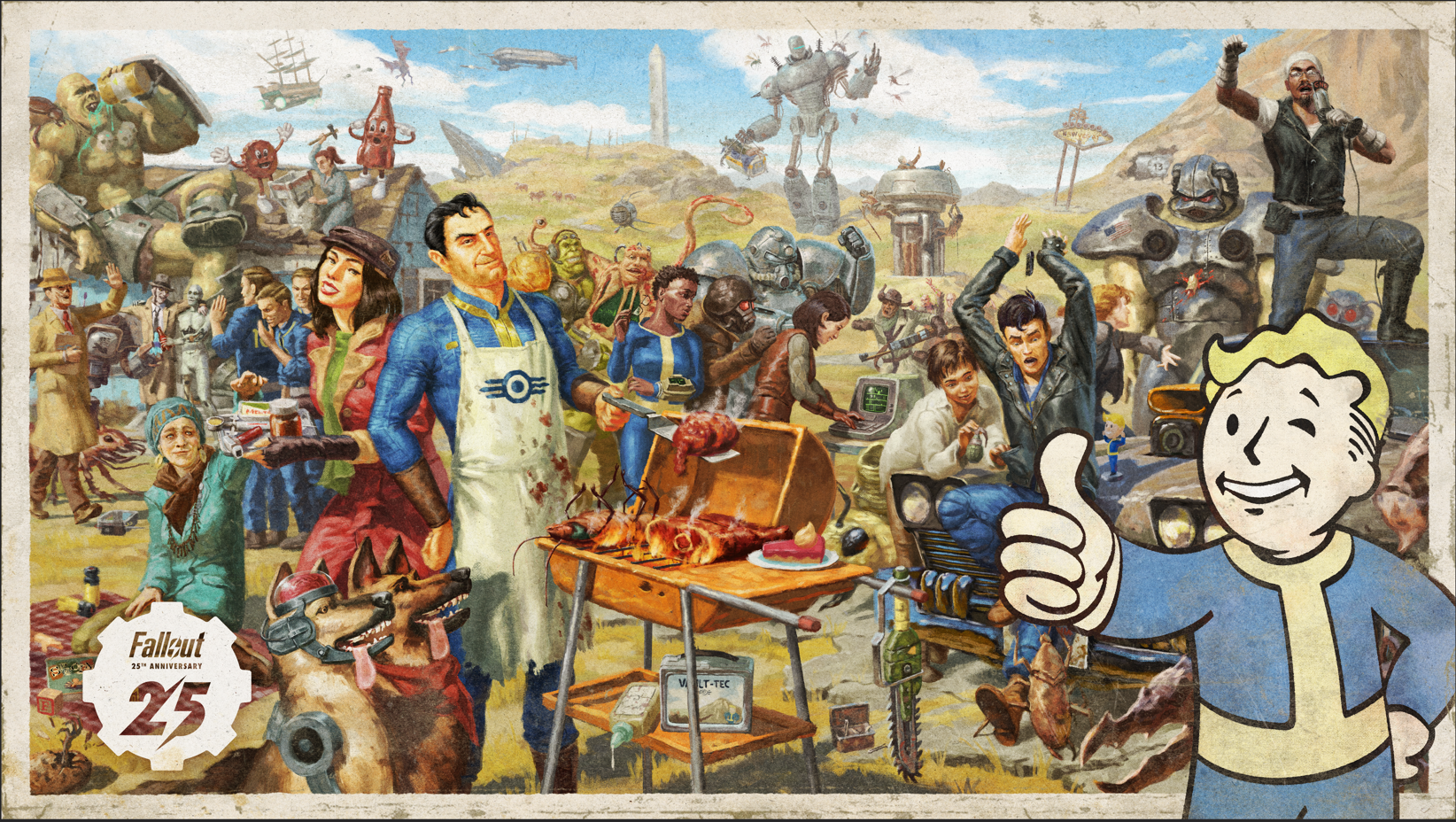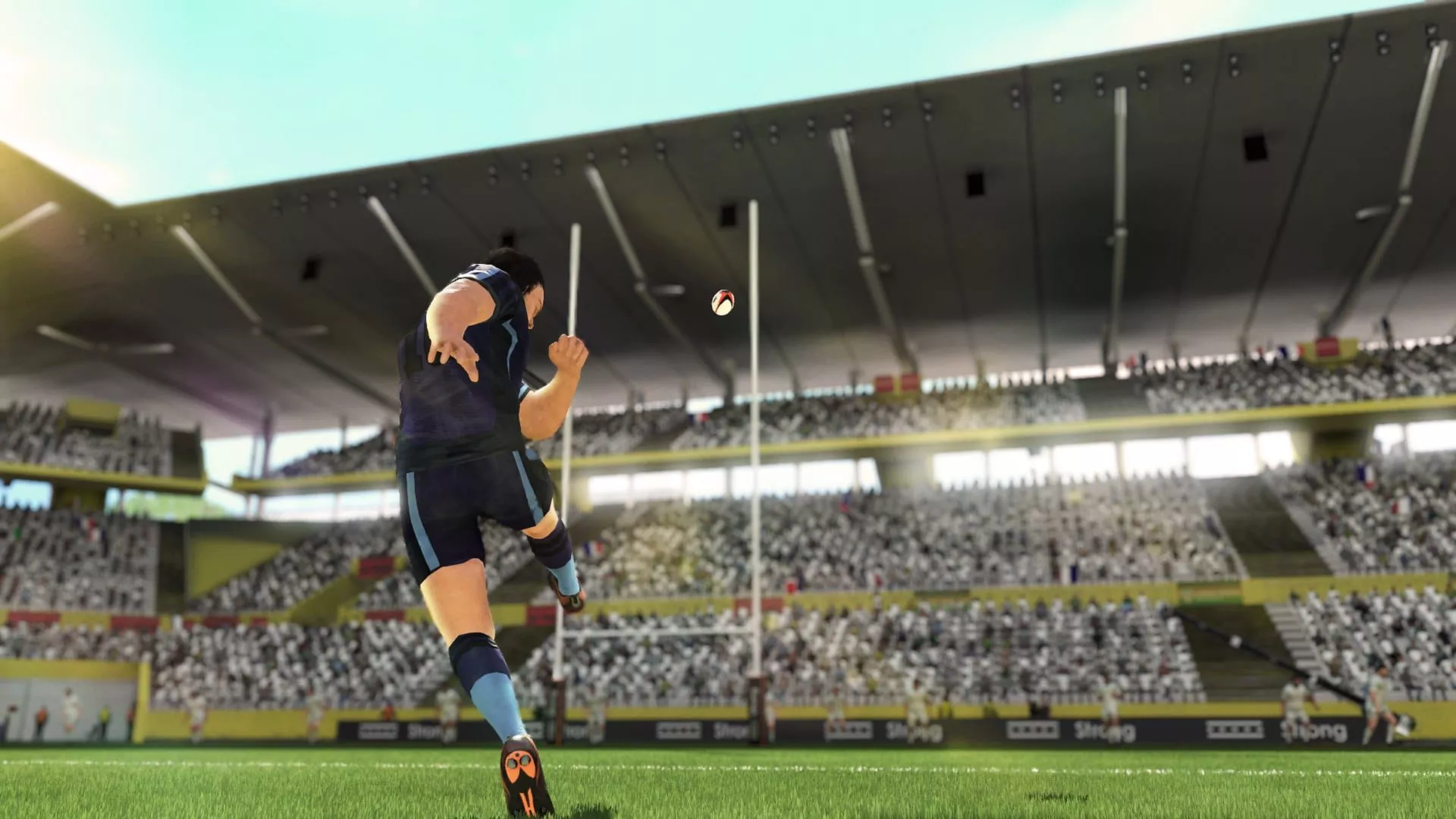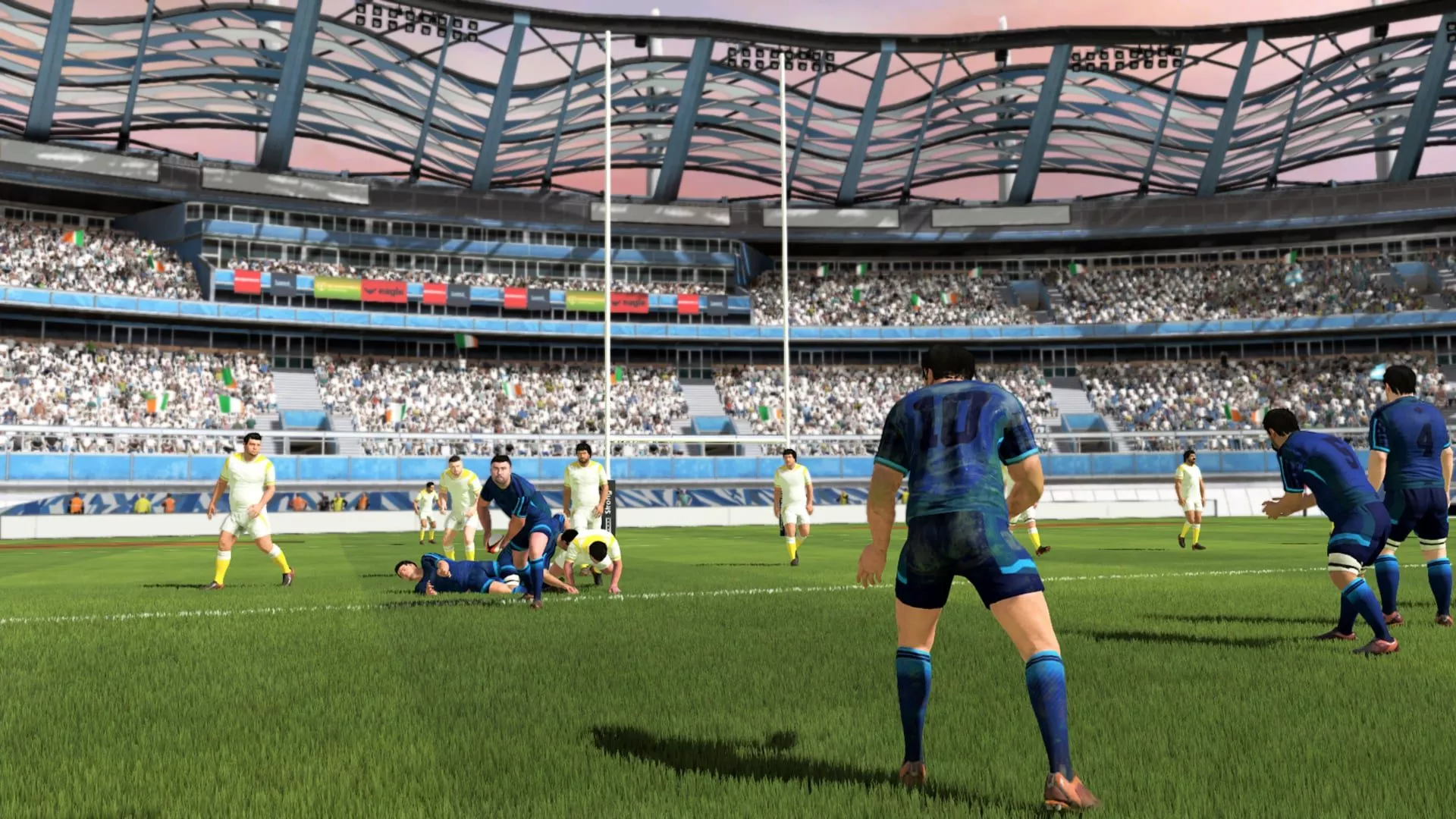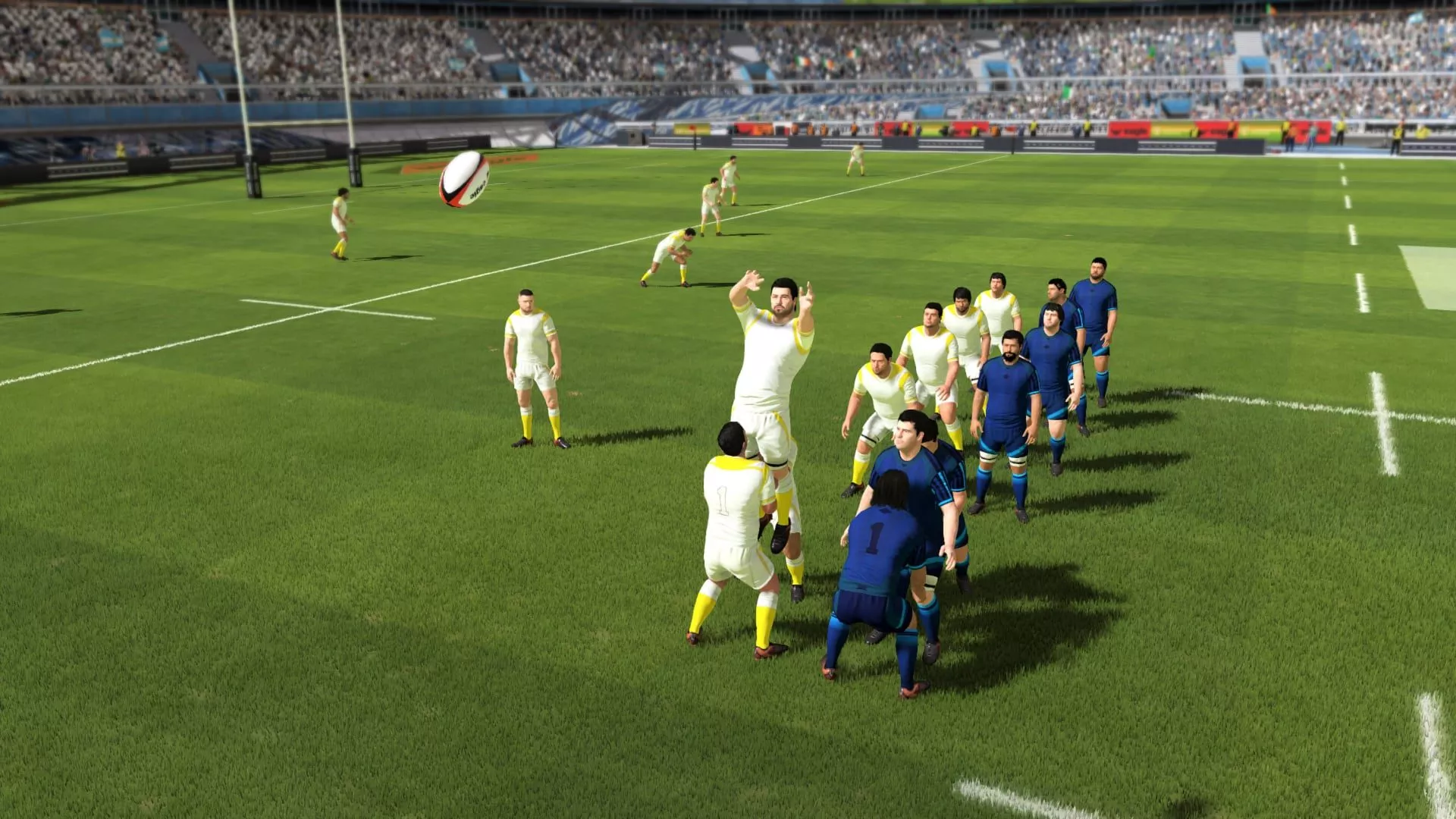Better than Australia's chances at winning back the Bledisloe
Modern rugby union games have become a lot like the sport itself: reluctant to evolve. “Incremental” is too generous a description of the changes between iterations of Wicked Witch’s Rugby Challenge series, while EKO Software is taking baby steps towards competence with its Rugby games. Rugby 22 is EKO’s third attempt with the oval ball, and their first release I’ve actually had fun playing, but it is still some distance from securing a spot in the first XV of sports games.
I’m reluctant to say they have nailed it, but Rugby 22 is the best “ball in hand” rugby union game since the EA Rugby games, the last of which came out when you only needed one hand to count how many years it had been since Australia won the Bledisloe Cup. Passing is a touch sluggish but it is easy to get the ball where you want it, with an expanding metre for cutout passes that make it easy to pick your man in the backline. When passes go to ground it feels like there is a good reason for it, and outside-in and run-around plays are activated with simple double taps of the pass buttons. Full set plays are also included, but just like in every other rugby game they aren’t of much use. You’ll be lucky if you get one pass away before being tackled as your players slowly run their lines.
Using footwork is a delight in Rugby 22 with sidesteps, spins, stutters, dummies and fends all activated by right stick flicks that work intuitively, in that they feel very similar to the same moves in FIFA or Madden, and are a huge improvement on years gone by (though why they can’t just explicitly list the exact controls for all of the moves I have no idea). Steps are unfairly effective, even from lumbering forwards, while palms feel particularly brutal as you throw a defender to the ground. Buying time to get a pass away with a fend is a great feeling, as is beating a fullback one-on-one with a step or a dummy. On higher difficulties these moves will be crucial to finding open space, and the AI is ruthlessly adept at exploiting these tools itself.
Even the kicking game is strong. While EKO eschews slow-motion kick placement it is usually fairly easy to get a kick away when you have the space, and I engaged in kicking duels for territory in a way I never have in prior rugby union games. Timing metres judge catching high kicks and work fairly enough. My only gripes are with the ball physics, where bounces stop dead too often, and because “grubber kick” and “add to ruck” share a button, you’ll accidentally kick the ball away more often than I would like.
On the other side of the ball, Rugby 22 struggles like the Namibian national team. Your AI defensive line is often a shambles after a couple of phases, leaving huge chunks of the field unguarded. AI defenders appear incapable of pushing the tackle button, forcing manual intervention in just about every case. Player changing can be off, and chasing down breaks is far too difficult. This isn’t helped by defenders shimmying sideways like they are defending in a line instead of turning and chasing when you want to cut down a break you see coming. You’ll eventually be able to anticipate danger and shut it down, but the AI scored far too many tries that I felt could have been stopped with better controls.
Rugby 22 plays a fairly competent game of rugby union overall, but it is very much two separate experiences. On “Legend” difficulty, it is a tense, gripping contest held back by a few unfortunate design issues. On any of the three difficulties below that it is a glorified training mode where stealing possession at ruck, scrum or lineout is trivial. If you get your kicks by putting on triple digit scores against minnows, stick to those lower difficulties. If you want to enjoy tight contests punctuated by occasional frustration and rage, “Legend” is for you.
The ruck plays like a contest only at this highest difficulty, where the balance of “hard to turn over, retain the ball when you should” seems to have been struck. There were a few situations where AI turnovers and retention baffled me, but generally whoever got to the ruck in numbers first, won the ball. Ruck supremacy is assisted by timing stick flicks when players join the contest and is helped by making dominant tackles using the “hit-stick” style right stick controls, and deciding which rucks to concede to be able to set a defensive line became an important strategy to retain defensive shape. On the lower difficulties, I’m not sure the AI ever put together more than three phases before I could turn it over. Rugby union is an easy game when you can take the ball at will.
Scrums become a major problem on Legend. Where the AI would only win scrums when I let them on easier difficulties, winning a scrum on Legend, even with the feed, was a feat worthy of a lap of honour around the house. It got to the point that I disabled knock-ons just so I wouldn’t automatically lose possession every time a scrum packed. Maybe others are more adept at the “match the stick movement” game that determines scrum power, but it never felt fair to me. To top it off the light blue circle you need to track blended with the grassy field, making the dour minigame even harder to complete.
Fatigue is another interesting factor in the game. When the run of play is going your way, you’ll find yourself burying minnows in the later stages of the match as gaps appear in the middle of the field and defenders fall off tackles. Unfortunately fatigue is a two way street, and doing a lot of defensive work will mean turning the ball over is near impossible late in games. Substitution management can alleviate some of this, but some gripping contests were ruined as I spent the last quarter of the game unable to steal the ball or retain my own possession.
Other annoyances are minor. It can be hard to track a bouncing ball, and you often need to rely on the commentary to hear what a penalty was awarded for. Animations can be a bit rough and your fullback will jump for a ball when nobody is within 20 metres of him rather than just catching and running. Goal kicking uses a cool system but it requires punishing stick flicking accuracy. In league matches statistics are not kept, you don’t even get a recap of scorers, and there are no manual instant replays. It’s rough around the edges, but provided you can overcome the scrum pains, it plays a good game of rugby union.
Much like Australian rugby union over the last decade, Rugby 22 is dragged down by its off-field management. Licensing in the sport remains a mess, with Rugby 22 missing the South Africa and England national side licences along with any English or southern hemisphere club competitions. The South African and English rugby unions must be particularly litigious, as EKO hasn’t even dared match their traditional colours; South Africa play in a garish red and orange strip. Australia, New Zealand, France and most of the pacific islands are there with player likeness and jerseys, but when South Africa take the field for a faux World Cup final in a strip you’d give two stars in a “create-a-jersey” download store, some of the grandeur of the occasion is lost.
Alongside this “World Cup-alike” competition is European league play with licensed French clubs, but where EKO is hoping the meat of the game lay is in its career mode. This is based around building up currency through performance in game and building a squad with blind card packs and incremental player boosts. After playing with international sides, going back to a slow, lumbering squad of nobodies is torturous, but there are ways to bet on your own performance to increase rewards and if a poor version of FIFA Ultimate Team without the insidious financial hooks sounds okay to you (there are no microtransactions in game at the time of review), you’ll enjoy career mode.
The presentation leaves plenty to be desired. Menus appear to have been translated by a free Android app, where you select to be “With” or “Without” an option such as knock-ons or offsides rather than turning them on or off, while a game is begun by selecting “Throw Off”. In game the commentary is repetitive and stilted, and often confuses the defending player for the attacker. It isn’t terrible, but it hasn’t evolved from the CD-ROM days.
Rugby 22 is hardly a visual showpiece, but player likeness is usually good enough and some of its animations look great. This all comes undone when a player kicks the ball at a right angle or sprints in open space like he has strapped a rake to his back, but tackles and evasive manoeuvres look good. The “zoom on action” camera that gets in close when you make a break (why is this a thing in rugby games?) manages to jitter and kill the framerate and needs to be turned off immediately. Stadiums look good, though one particular arena casts shadows in such a way that you can barely see the play at one end of the field. Playing at night looks good too but there is no way to randomise time of day and weather effects.
There are events and missions that attempt to guide how you are playing, offering currency for career mode as prizes. It was fun to see a popup in game “you’ve kicked 500 times” or “got 100 turnovers” but it will only change how the most dedicated to the career mode will play. I haven’t got much time for blind boxes and grind, even if there is no “pay to win” model attached, but those that particularly enjoy Rugby 22 will have plenty of reason to stick with it for a while.
On the pitch, Rugby 22 is oh so close. With some crisper passing, better defensive AI and balanced scrums this would be a genuinely great rugby union game. I’ve had to manufacture tension to create fun in just about every rugby game of the last 15 years, in Rugby 22 I had caveat-free fun for a decent chunk of the time I was playing. Unfortunately, the closer these games get to quality, the more those little issues stand out, and off the pitch this is still an unsatisfactory package lacking modes, licences and polish. If graphics, the English or South African rugby union team, or long term commitment are important to you, Rugby 22 isn’t going to deliver. If you’ve been hanging out since the PS2 era to just have some fun with a rugby union game, you might just find it in Rugby 22.
Rugby 22 was reviewed using a retail download on Xbox Series X, purchased by the reviewer. A review code was also provided by the publisher. Click here to learn more about Stevivor’s scoring scale.
This article may contain affiliate links, meaning we could earn a small commission if you click-through and make a purchase. Stevivor is an independent outlet and our journalism is in no way influenced by any advertiser or commercial initiative.



























